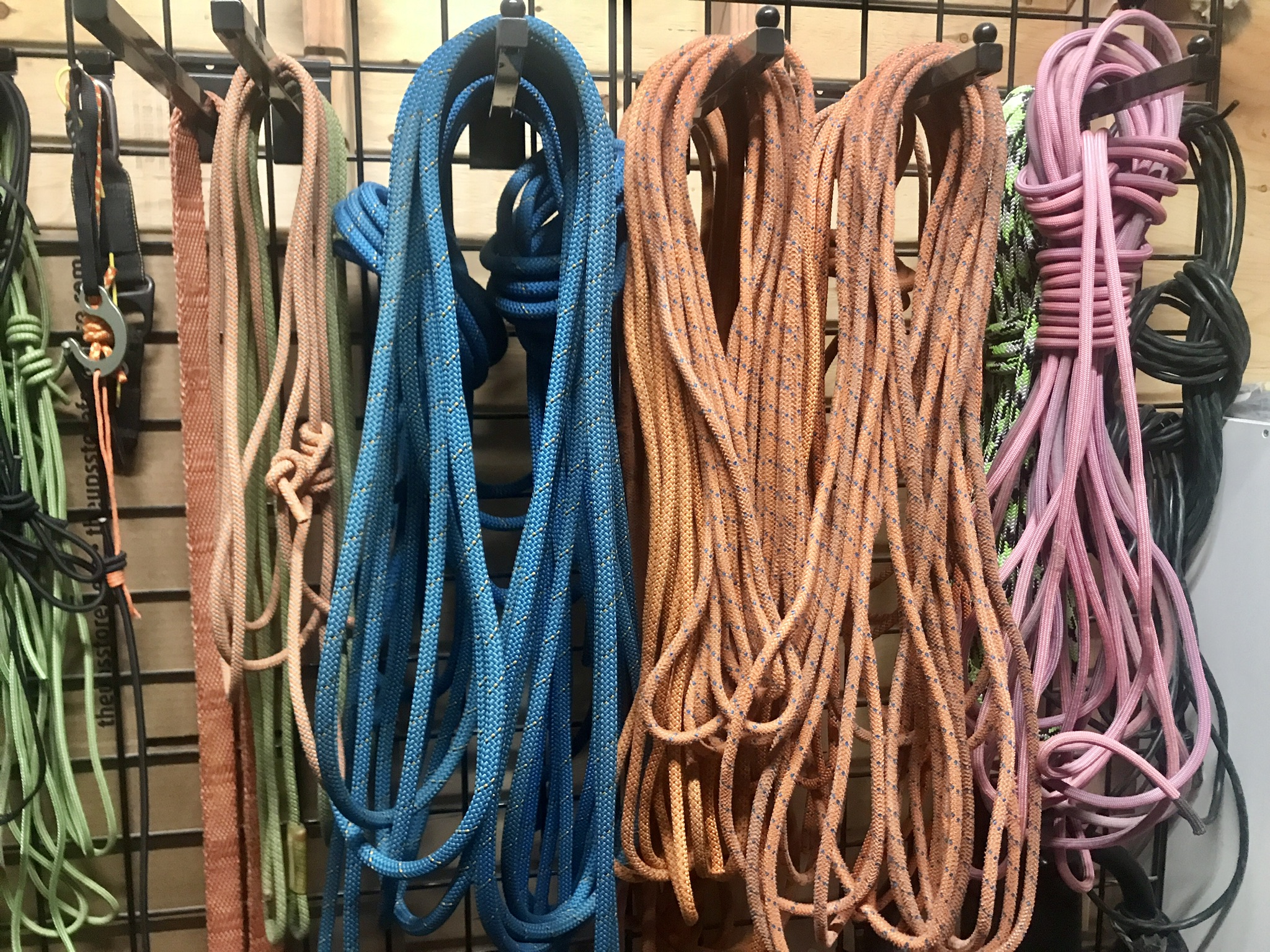A Rope Story
Canyoneering ropes don’t get old; they just get shorter.
A few years ago I got a call from BlueWater asking me if I would like to have a 1,000-foot 8mm Canyon Pro rope. FREE. The rope had been custom ordered and custom cut for a customer. With his first rappel the customer experienced some sheath slippage and returned the rope for a refund. BlueWater could not resell the rope since it was used, so it was gifted to me.
The sheath slippage does not concern me as I understand the cause. Dyneema core (no stretch and slippery). Polyester sheath (stretches). There will be some sheath slippage. I expect it. It occurs when the rope is new, but soon settles into an equilibrium. I simply cut off the excess sheath and carry on. A wee bit of a hassle, but I am left with what I still consider the finest canyoneering rope available. That applies for the Canyon Pro’s siblings — Canyon Pro DS (dual sheath; polyester and Technora) and Canyon Extreme (Technora sheath).
When my 1,000-foot Canyon Pro arrived I invested some time “milking” the sheath off the end and cut it. I was now the proud owner of a 1,000-foot rope with no use for anything that long. A couple weeks went by before I decided to cut it into two 200s and one 600. The 600 sat in storage for awhile before I decided to cut it into two 300s. I now had four very useable lengths of Canyon Pro. I sold a couple of them while they were still nearly new. The two that I kept accompanied me on many canyoneering tips around the US and around the world. Between them, they have seen a few hundred canyons and many courses.
No matter how hard you try to avoid abrasion, canyons are tough on ropes. Especially the sandstone canyons of the Colorado Plateau. Courses tend to be especially tough on ropes with students who have many things going through their minds as they transition over the edge. Laying the rope down where it will take the least abrasion is not yet one of those things. Core shots are all but inevitable.
A 200-foot rope becomes a 160 and a 40 when you cut it at the core shot. The 160 becomes a 70 and a 90. The two ropes I kept got shorter. And shorter. I managed to maintain two 100-footers for a long time which served as practice ropes in courses, primarily used indoors in my classroom. But I we did take them outdoors on occasion and it finally happened. Another core shot. Another cut. A 100-foot Canyon Pro, cut at the core shot, now a 58-footer.

The Final Cut
Pulling the rope through a measuring device, anticipating the duct tape that marked the core shot from the day before. 58 feet.
I will find a use for it, but unlikely it will see any more canyons.








